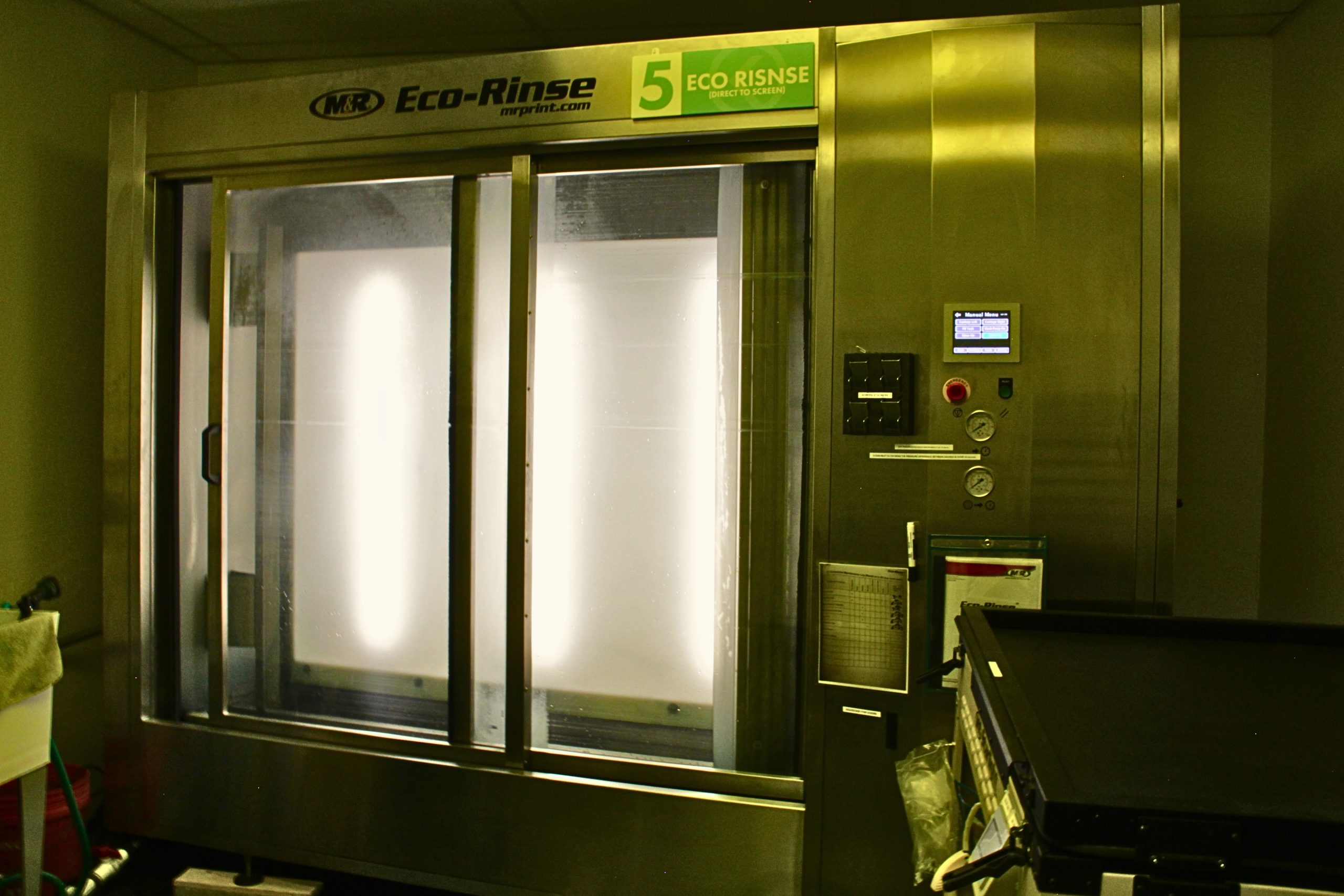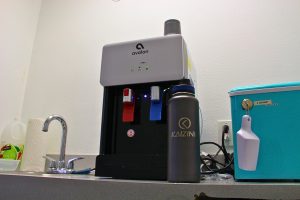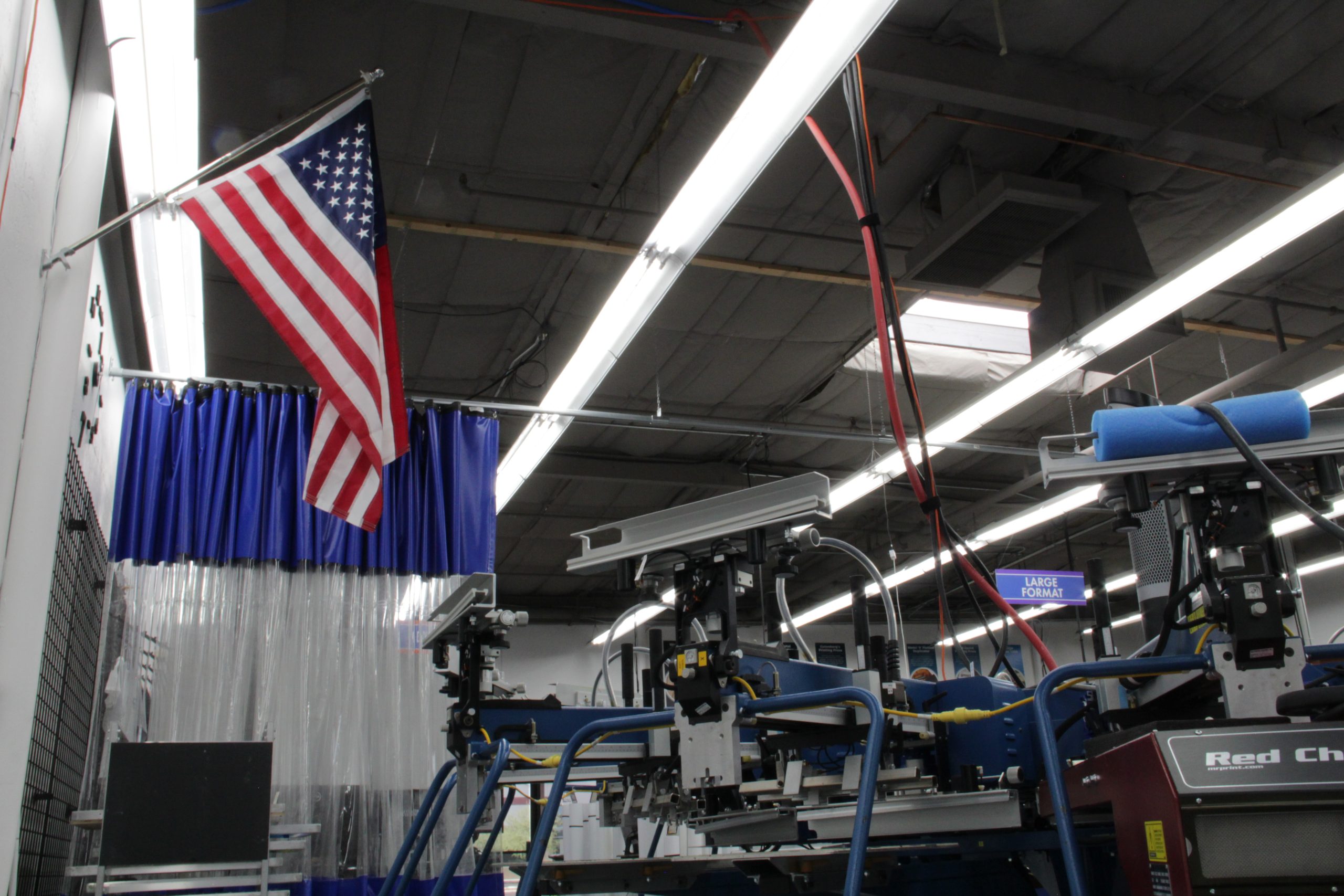As environmental concerns gain prominence globally, sustainability has become a crucial focus for businesses across various sectors, including custom branding. The demand for eco-friendly practices in screen printing, embroidery, and promotional products is rising, pushing companies to adopt greener methods. In this blog post, we’ll explore key sustainability trends in the custom branding industry and show how Kaizink is leading the charge with its innovative practices. We will cover the evolving standards, emerging technologies, and practical steps businesses are taking to reduce their environmental footprint.
1. The Evolution of Eco-Friendly Inks
Inks play a significant role in the environmental impact of custom branding. Traditionally, the industry relied heavily on solvent-based inks, which, while effective, released harmful volatile organic compounds (VOCs) into the atmosphere. These substances are not only detrimental to the environment but also pose health risks to workers.
- Water-Based Inks: The shift towards water-based inks represents a significant improvement. Unlike their solvent-based counterparts, water-based inks use water as a primary solvent, which drastically reduces the emission of VOCs. These inks are less toxic and easier to clean, leading to a cleaner and safer production environment. They are becoming the norm in the industry as companies seek to reduce their environmental impact.
- Bio-Based Inks: Another innovative solution is the development of bio-based inks. These inks are derived from renewable resources such as soy, algae, or other plant materials. They offer a greener alternative to petroleum-based inks by reducing dependence on non-renewable resources. Bio-based inks not only have a lower environmental impact but also contribute to a more sustainable supply chain.
- Ink Recycling Innovations: Recycling ink waste is another area where the industry is making strides. One notable innovation is the Ozzy Juice system, which Kaizink utilizes. This technology incorporates microbes to break down used ink, making it recyclable. The ink is maintained at optimal temperatures in a smart wash container, ensuring efficient recycling and minimizing waste. Such systems represent a significant advancement in creating a circular economy within the custom branding industry.
2. Advancements in Waste Management

Effective waste management is critical for reducing the environmental footprint of custom branding operations. The industry is exploring various strategies to manage and minimize waste effectively.
- Recycling Programs: Comprehensive recycling programs are becoming standard practice. These programs often include the recycling of materials such as printing plates, paper, and ink cartridges. For instance, Kaizink is enrolled in the Xerox Consumable Recycling Program, which ensures that empty toner cartridges are returned and processed responsibly. This type of program helps reduce the volume of waste sent to landfills and promotes the responsible use of resources.
- Water Recycling Systems: Water usage is a major environmental concern in screen printing. Advanced water recycling systems have been developed to address this issue. Kaizink’s Ecorinse system exemplifies this approach. It reuses water from screen cleaning processes, filtering it through seven stages to remove contaminants down to 20 microns. This system conserves water and reduces the impact of wastewater on the environment.
- Waste-to-Energy Solutions: Some companies are exploring waste-to-energy technologies, which convert waste materials into usable energy. This approach not only helps manage waste but also provides an alternative energy source. While not universally adopted, it represents a forward-thinking strategy for integrating waste management with energy production.
3. Reducing Plastic and Resource Consumption
Efforts to reduce plastic use and conserve resources are increasingly important in the custom branding industry. Companies are adopting various strategies to minimize their environmental impact.

- Reusable Materials: The transition to reusable materials is a key trend. For example, Kaizink provides its employees with Hydro Flask bottles to reduce reliance on single-use plastic bottles. Additionally, the company has implemented a reverse osmosis (RO) filter system to ensure clean water while reducing plastic waste. These initiatives not only support sustainability but also encourage employees to adopt eco-friendly practices.
- Resource Efficiency: Efficient use of resources is crucial for sustainability. Kaizink measures inks accurately for each job, ensuring that only the necessary amount is used. This approach helps minimize waste and supports the conservation of resources. By ordering and using only what is required, companies can reduce excess inventory and avoid unnecessary waste.
- Sustainable Packaging: Sustainable packaging practices are also gaining traction. Kaizink repurposes the backing from adhesive vinyl as packaging material for outgoing shipments. This practice reduces packaging waste and highlights the company’s commitment to resource efficiency.
4. Energy Efficiency and Technological Innovation
Energy efficiency and technological innovation are central to achieving sustainability in custom branding operations.

- Energy-Efficient Equipment: The use of energy-efficient equipment is a growing trend. Energy-efficient lighting, such as LED lights, is commonly used in custom branding facilities to reduce energy consumption and greenhouse gas emissions. Kaizink’s investment in LED lighting throughout its shop demonstrates a commitment to lowering energy use and supporting environmental goals.
- Quiet Equipment: Reducing noise pollution is another important aspect of sustainability. Kaizink utilizes some of the quietest equipment available, which not only improves the work environment but also contributes to overall sustainability efforts. Quiet equipment reduces noise pollution and enhances employee comfort, aligning with broader environmental and social goals.
- Digital Technologies: Digital solutions, such as digital dark rooms, offer significant benefits for sustainability. Digital dark rooms reduce defects and waste by improving accuracy in the screen exposure process. This technology helps minimize the amount of ink and materials wasted, supporting a more efficient and sustainable production process.
5. Community Engagement and Environmental Education
Community engagement and education play a crucial role in advancing sustainability within the custom branding industry.
- Local Initiatives: Participating in local sustainability initiatives and supporting environmental causes can amplify the impact of green practices. Companies can engage in community projects, sponsor environmental events, and collaborate with organizations focused on sustainability. By doing so, businesses can enhance their commitment to environmental stewardship and foster positive community relationships.
- Educational Outreach: Educating customers, employees, and the public about sustainable practices is essential for promoting environmental responsibility. Sharing information about eco-friendly choices, success stories, and sustainable behaviors can help raise awareness and encourage responsible decision-making.
6. The Role of Certification and Standards
Certifications and standards provide guidance and verification for sustainability efforts in the custom branding industry.
- Environmental Certifications: Certifications such as ISO 14001 (Environmental Management) and OEKO-TEX Standard 100 (textile safety) offer frameworks for implementing and verifying sustainable practices. These certifications help ensure that operations meet recognized environmental standards and demonstrate a commitment to sustainability.
- Industry Standards: Adhering to industry standards for sustainability can help businesses align with best practices and showcase their dedication to environmental responsibility. Standards like the Global Organic Textile Standard (GOTS) and the Forest Stewardship Council (FSC) provide guidance on sustainable sourcing and production practices.
Conclusion: The Future of Sustainable Custom Branding
The custom branding industry is making significant strides toward sustainability. From adopting eco-friendly inks to implementing advanced waste management and energy-efficient technologies, businesses are finding innovative ways to reduce their environmental impact.
Kaizink exemplifies how companies can integrate sustainability into their operations. By utilizing advanced ink recycling systems, water recycling technologies, and reusable materials, Kaizink demonstrates a commitment to greener practices. Understanding and adopting these industry trends can help businesses and consumers contribute to a more sustainable future in custom branding.
As the industry continues to evolve, embracing sustainability will be crucial for reducing environmental impact and supporting responsible practices in custom branding.




